With Alan's help, and to my relief, I managed to write in my best handwriting and with no errors, what I hoped would be an appropriate testimonial for the first page of Mr Butt's 16th Guest's Book. Mr Butt looked pleased and presented me with a lovely paper machier bracelet. After buying a few attractive but inexpensive ornaments and jewellery from his shop, we bade our fond farewells and headed off on our seven hour road journey to Kargil, on the border of Kashmir and Ladakh. We had thoroughly enjoyed our stay at Butt's Clermont House Boats and would highly recommend this charming house boat accommodation for travellers able to visit Kashmir. It is a truly beautiful place. It is just a great pity about the ongoing conflict.
Our new driver was Sonam, a handsome and capable young man perhaps in his early thirties whose home was in Ladakh. We were to well appreciate Sonam's expert driving skills and his informative assistance during our travels over the Zozilla Pass to Kargil.
Farouk, Mushtaq's younger brother was our guide until we reached Kargil. Farouk explained that Mushtaq, being the eldest son of a deceased father, was now fully responsible for his entire family, including his mother, numerous siblings and various aunts and uncles. Mushtaq had mentioned this briefly to us and we wondered whether his often distracted behaviour was due to his family responsibilities. Farouk told us that he needed an operation for his obviously very swollen hands and feet but the family was unable to afford it. When he persisted in asking what price we paid for the pashmina the evening before I began to feel uncomfortable.
The rural outskirts of Srinagar were lush and green, flanked by tall timbered mountains. The farm houses looked prosperous with rice growing, and apple and walnut orchards being the main agricultural activities. Farouk informed us that Kashmir farmed around 80 varieties of apples and that the farmers here were relatively well off.
The scenery along the drive from Srinagar to Sonamarg through the alpine meadows of the Sindh Valley was truly beautiful. Glaciers, frozen brooks and waterfalls once flowing down from tall pine forested mountains lapped the edge of our narrow road.
Some 87 kilometers north-east from Srinagar we reached Sonamarg, a desolate and rather miserable place, with not much to identify it other than a lot of horses for hire and a vast number of nomad tents. Sonamarg (meaning "Meadow of Gold"), is located in one of the great Himalayan glaciers - the Kolhoi and the Machoi - of the Kashmir Valley. Some of the surrounding peaks are above 5,000 meters. At an altitude of 2,800 meters, Sonamarg has no permanent settlement and is inaccessible during winter due to heavy snow falls and avalanches.
Sonamarg was once an important gateway on one of the ancient Silk Road routes, connecting Kashmir with China and the Middle East. Today sad little Sonamarg is a strategically important location for the Indian army, given its close proximity to the India - Pakistan Line of Control and to the disputed borders with China.
The enormity of the army and police presense was overwhelming. Even in China we had never witnessed such numerous enormous army bases and endless nose to tail truck convoys. In fact we were amazed by the enormity of the military and police presense throughout our journey in Kashmir and Ladakh. Apparently, there are some 400,000 soldiers located across the two States. But with disputed borders to the long standing enemy of Pakistan and China's disputed annexation of Aksai Chin, it is little wonder that this area is of such strategic importance to India. The frequent army convoys, police and army checks did not add to the ease of the never ending traffic jams along the narrow road from Sonamarg, over Zozilla Pass to Dras.
The traffic was made even more chaotic due to the Yatra (pilgrimage) to the Hindu Abernarth Temple that is dedicated to the holy trinity god Shiva. Every year inside the main Abernath Cave an Ice Shiva Lingam (in Hindu belief it is the genitals of the god Shiva) forms, along with two other ice formations representing Shri Ganesh and Maa Parvati. And each year a Yatra is held to pay homage to these gods. As we were to sadly find out, this Yatra is extremely popular.
It is desirable but not obligatory for a Hindu to undertake a Yatra to perform rituals and obtain good karma or just to enjoy the festivities. Yatras are now highly organised affairs, with specialised tourism companies catering to the needs of the Yatris (pilgrims). State governments are often involved with the organisation, stipulating numbers, registering Yatris and regulating traffic - as we were to soon find out.
Suddenly the traffic just stopped. Hundreds of cars were making two or even three lanes in an attempt to overtake the traffic. Of course this just exacerbated what was one of the longest and most chaotic traffic jams we had seen on our travels.
The situation soon became ugly. Riot control vehicles arrived and police and soldiers came from seemingly nowhere, dressed in bullet proof flack jackets and wielding rifles and long batons in an attempt to restore order to the two lane road. For a while we wondered why Sonam had joined a third lane with our car. It was actually to avoid the long queues of Yatra pilgrims who had to present relevant documents to officials before entering the official Yatra site and who were turning off some way down the road - while we were heading direct to Kargil and then onto Ladakh (eventually Leh). One sign said "Leh Can Go, Yatra No". Relieved, we kept forging through in our third lane. One policeman waved us on, another pulled us up and said no. It was chaotic. Sonam just kept driving.
A ferocious policeman finally stopped us and demanded Sonam to wind down his car window. Sonam just kept saying "Ladakh, Ladakh". The policeman shouted at him then flung open the car door and began savagely beating our poor Sonam with his baton. The situation was becoming a bit more than concerning but Sonam just sat passively without moving or speaking. To our relief, the policeman eventually stopped the beating and slammed the door shut.
Sonam explained there was great hatred between Muslim Kashmir and Buddhist Ladakh, even to the point of each side having to obtain visas to visit either State. In fact our Ladakh guide would not even consider travelling to Kashmir. Kashmir of course identifies itself more with Muslim Pakistan. Farouk told us that around 70% of Kashmiris barrack for the international Pakistan cricket team! Alan ashamedly told him that I barrack for the Pakistan team too.
As the road began to wind up toward Zozilla Pass we looked down onto the Yatra camp. Resembling a giant colourful chequer board, the camp site must have spread at least two kilometers in diameter, housing what appeared to be thousands of tents and amenity buildings. Farouk and Sonam explained that the pilgrims could walk from the camp site to the Abernath Cave. Others hired ponies or flew in by helicopter. In fact there were helicopters everywhere.
Zozilla Pass at an altitude of 3,390 m is closed during winter. Some years ago it was closed for five months due to a huge dump of snow and ice. The spectacular Pass is well known for its treacherous nature, especially after heavy rain or snow (refer photos below taken by the Hindustan Times).
At the time of Independence in 1947, the road over Zozilla Pass was the scene of the world's highest-ever tank battle, when India used tanks to stave off Pakistan's troops. Christopher Kremmer in his fabulous book "The Carpet Wars" states "It was not a highway to war; the highway WAS the war. Every aspect of the operation to retake the heights originated along a road so narrow that the diesel-spewing military traffic could only move in one direction at a time".
The 9 km drive to Zozilla Pass was death defying, even rivaling some of the extreme roads we had travelled on during our travels in Pakistan.
The road clung impossibly to the crumbling sides of Zozilla, in places our car having to swerve to avoid severely washed away patches of road. As we climbed, the road became narrower with no safety fencing, making it frighteningly easy to peer down at the 1,000 m drops to the base. Low cloud descended on the peak of the moody pass, making it impossible to see further than around one hundred meters. And then the rain set in.
Nosing up the mountain in heavy traffic Sonam began to curse the car in front of us. It was leaving at least a two car gap between it and the next car. He explained that this sort of driving is conducive to landslides - of which there were many along our road - and the nose to tail driving made it a lot safer. It sounded strange to me but Sonam was very experienced with this treacherous road.
A couple of times on our journey the traffic just stopped - long enough for people to get out of their cars and wander up and down the road. I began to seriously wonder if we would ever make it to Kargil. No-one talked for quite some time. I expect we were all thinking the same.
The road snaked its way up the mountain in long loops. Jagged, razor sharp rock pinnacles lined the road, piercing eerily through the the fog. Near the summit the traffic again came to a dead halt. Ahead of us a convoy of trucks pulled precariously close to the sheer drop. Road works were in place, with earth movers positioned in death defying positions right on the edge of the precipice. We found it hard to watch them. Just one slight slip backwards would be the certain end of the driver. More police in flak jackets patrolled the road. It was a haunting and forbidding place to be, especially in the wet and foggy conditions.
Somehow we crossed the 3,528 m Pass without knowing it, descending through rolling snow capped mountains and then through rural high valleys leading to the township of Dras.
Eighty km from Sonamarg lies the township of Dras. In local Balti language Dras means "Hell". Lonely Planet describes Dras beautifully: "Muslim Dras is a miserable parade of shop-houses and army bases marring an otherwise attractive upland valley. One day it might make a good hiking base but as it's so close to the Line of Control, strolling carelessly into the mountains here could get you shot...." Given the proximity of the often troubled border with Pakistan, we could well understand why.
At an altitude of 3,230 m Dras experiences a altitude-influenced subarctic climate with average winter lows of around -22 degrees C and summer average temperatures of just 15 degrees C.
On the 9th January, 2005 meteorologists recorded a freak temperature of -60 degrees C and ever since Dras has touted itself as being "The Second Coldest Place on Earth". This may well be the only tourist attraction as Dras is certainly not a pretty place. We found it had a certain morbid feel probably because we were aware that Dras was the scene of terrible fighting during past bloody Indian-Pakistan wars. But it was fascinating.
Farouk explained that people keep warm in the extreme cold of winter by placing terraccotta containers of hot charcoal (Kangri) under their long traditional over coats (Phiren). Apparently, the Kashmiris still use them as they are cheap and effective. We were astonished - it sounded to us to be more than a bit dangerous to have red hot charcoal so close to your body. An article in the Express Tribune (International New York Times) describes in detail the use of the Kangris. Link: http://tribune.com.pk/story/326179/for-kashmiris-a-walking-heater-keeps-chill-at-bay/
After reading this article, we certainly were right about the dangers of using Kangri. If inevitable serious burns and possible fires are not bad enough then spare a thought for the carcinogenic properties of burning charcoal and the resulting serious cancers they cause. We found it interesting that Kangris are used also in parts of northern Pakistan.
We stopped for lunch at a very chilly Dras. Sonam said he was vegetarian so he and Farouk dined elsewhere. We guessed that they had to eat at cheaper places. The restaurant was a huge barn of a place filled with local road workers and labourers. There were no foreigners in sight and the locals stared at us as if they were seeing ghosts. We understood. Dras is certainly no tourist hang out. Fortunately, the manager was very welcoming and helpful and despite our language problems we managed to order bowls of steaming hot soup and plates of freshly baked bread. It was very enjoyable and even the locals started to become more friendly.
We arrived at our destination of Kargil late in the afternoon. Farouk was returning to Srinagar with another driver at 3.00 am the next morning and was staying the evening with Sonam. We didn't envy him after the long trip to Kargil.
Our new guide Rigzen met us at our hotel. An impish little fellow, full of enthusiasm and laughter, Rigzen told us he was studying Buddhism religion at Delhi University and was working as a guide to supplement his income. We were to appreciate his knowledge and his sense of fun throughout our journey from Kargil to Manali. He was indeed a very nice guy.
The D'Zozilla Hotel was basic but clean and after the long seven hour road trip, we appreciated a hot shower and a good meal.
After our meal, Alan and I sat on our verandah and enjoyed some drinks. We were soon joined by Mr Pranato, a charming Indonesian businessman who was working at Etisalat in Aghanistan. This took us by surprise. Kargil seemed like a most unlikely place to meet an Indonesian man, especially one working in Afghanistan. Apparently, Mr Pranato was meeting his Indonesian wife and daughter in India, where they were to have a holiday together and certainly a lot safer place to meet than Afghanistan. We were later joined by Mr Pranato's wife and daughter. They too were lovely people and we enjoyed a really pleasant evening.
MORE PHOTOS OF OUR JOURNEY FROM SRINAGAR TO KARGIL.
THE LAST PHOTOS OF SNOW AND ICE BOUND ZOZILLA WERE TAKEN BY THE HINDUSTAN TIMES IN THE MONTH OF APRIL (unfortunately, the article did not inform of the year)
A Police Assault, a Yatra & Zozilla Pass
Thursday, July 05, 2012
 Kargil, Jammu and Kashmir, India
Kargil, Jammu and Kashmir, India
Other Entries
-
2Aboard the Grafton Express for Sydney
Jun 1817 days prior Crowdy Head, Australiaphoto_camera7videocam 0comment 0
Crowdy Head, Australiaphoto_camera7videocam 0comment 0 -
3A Very Well Kept Secret.....
Jun 1916 days prior Shanghai, Chinaphoto_camera9videocam 0comment 0
Shanghai, Chinaphoto_camera9videocam 0comment 0 -
4City Furthest from a Coastline in the World
Jun 2015 days prior Urumqi City, Chinaphoto_camera15videocam 0comment 0
Urumqi City, Chinaphoto_camera15videocam 0comment 0 -
5From Urumqi: A Blistering Hot Welcome to Pakistan!
Jun 2213 days prior Islamabad, Pakistanphoto_camera12videocam 0comment 1
Islamabad, Pakistanphoto_camera12videocam 0comment 1 -
6Flight Cancelled - Corruption or Just Bad Weather?
Jun 2312 days prior Naran, Pakistanphoto_camera19videocam 0comment 0
Naran, Pakistanphoto_camera19videocam 0comment 0 -
7Blown Away by Babusar
Jun 2411 days prior Babusar Pass, Pakistanphoto_camera31videocam 0comment 0
Babusar Pass, Pakistanphoto_camera31videocam 0comment 0 -
8Picturesque Rama - But a Stay That Felt Forever
Jun 2411 days prior Rama Gilgit-Baltistan, Pakistanphoto_camera10videocam 0comment 1
Rama Gilgit-Baltistan, Pakistanphoto_camera10videocam 0comment 1 -
9A Spiritual Experience & Shoot Only with a Camera!
Jun 269 days prior Shigar, Pakistanphoto_camera17videocam 0comment 0
Shigar, Pakistanphoto_camera17videocam 0comment 0 -
10Stunning Shigar and the King's Bedroom
Jun 269 days prior Shigar , Pakistanphoto_camera14videocam 0comment 0
Shigar , Pakistanphoto_camera14videocam 0comment 0 -
11NEVER, EVER Get Involved in a Political Rally.....
Jun 278 days prior Khaplu, Pakistanphoto_camera11videocam 0comment 0
Khaplu, Pakistanphoto_camera11videocam 0comment 0 -
12More Photos of Khaplu
Jun 278 days prior Khaplu, Pakistanphoto_camera13videocam 0comment 0
Khaplu, Pakistanphoto_camera13videocam 0comment 0 -
13Another Flight Cancelled - or Chilling at Chilas
Jun 287 days prior Chilas, Pakistanphoto_camera15videocam 0comment 0
Chilas, Pakistanphoto_camera15videocam 0comment 0 -
14Lone Man with a Rifle: Chilas to Islamabad
Jun 296 days prior Islamabad, Pakistanphoto_camera22videocam 0comment 0
Islamabad, Pakistanphoto_camera22videocam 0comment 0 -
15Vibrant Exotic Lahore
Jun 305 days prior Lahore, Pakistanphoto_camera19videocam 0comment 0
Lahore, Pakistanphoto_camera19videocam 0comment 0 -
16"A Love Marriage Sir.....?"
Jul 023 days prior Amritsar, Indiaphoto_camera14videocam 0comment 0
Amritsar, Indiaphoto_camera14videocam 0comment 0 -
17Kashmir: Tranquility and Terror
Jul 032 days prior Srinagar, Indiaphoto_camera11videocam 0comment 0
Srinagar, Indiaphoto_camera11videocam 0comment 0 -
18Photo Gallery of Srinagar
Jul 032 days prior Srinagar, Indiaphoto_camera30videocam 0comment 0
Srinagar, Indiaphoto_camera30videocam 0comment 0 -
19A Police Assault, a Yatra & Zozilla Pass
Jul 05 Kargil, Indiaphoto_camera22videocam 0comment 0
Kargil, Indiaphoto_camera22videocam 0comment 0 -
20Into Ladakh: "Take Care, Life Has No Spare"
Jul 061 day later Alchi, Indiaphoto_camera24videocam 0comment 0
Alchi, Indiaphoto_camera24videocam 0comment 0 -
21Jule (joo-lay) from Ley!
Jul 072 days later Leh, Indiaphoto_camera13videocam 0comment 0
Leh, Indiaphoto_camera13videocam 0comment 0 -
22Photo Gallery of Leh
Jul 072 days later Leh, Indiaphoto_camera26videocam 0comment 0
Leh, Indiaphoto_camera26videocam 0comment 0 -
23"Luxury Camping" Or a Rough Night in Sarchu
Jul 105 days later Sarchu Heights, Indiaphoto_camera32videocam 0comment 0
Sarchu Heights, Indiaphoto_camera32videocam 0comment 0 -
24To Manali: "But Sir, We Have a Flight to Catch..."
Jul 116 days later Manali, Indiaphoto_camera18videocam 0comment 0
Manali, Indiaphoto_camera18videocam 0comment 0 -
25Magical Manali
Jul 116 days later Manali, Indiaphoto_camera11videocam 0comment 0
Manali, Indiaphoto_camera11videocam 0comment 0 -
26Mandi Town: Frenetic but Friendly
Jul 138 days later Mandi, Indiaphoto_camera18videocam 0comment 0
Mandi, Indiaphoto_camera18videocam 0comment 0 -
27Shimla: Birthplace of the Indian Partition
Jul 149 days later Shimla , Indiaphoto_camera8videocam 0comment 0
Shimla , Indiaphoto_camera8videocam 0comment 0 -
28PRIMATE ALERT! Photo Gallery of Shimla
Jul 149 days later Shimla, Indiaphoto_camera28videocam 0comment 0
Shimla, Indiaphoto_camera28videocam 0comment 0 -
29Toy Train to Kalka & the Shatabdi Express to Delhi
Jul 149 days later Delhi, Indiaphoto_camera12videocam 0comment 0
Delhi, Indiaphoto_camera12videocam 0comment 0 -
30Introduction to the Mighty Mughal Empire
Jul 1611 days later Agra, Indiaphoto_camera11videocam 0comment 0
Agra, Indiaphoto_camera11videocam 0comment 0 -
31Majestic Mughul Legacies - Akbar's Tomb & Red Fort
Jul 1712 days later Agra, Indiaphoto_camera34videocam 0comment 0
Agra, Indiaphoto_camera34videocam 0comment 0 -
32Majestic Mughal Legacies - The Taj Mahal
Jul 1712 days later Agra, Indiaphoto_camera23videocam 0comment 0
Agra, Indiaphoto_camera23videocam 0comment 0 -
33Fatehpur Sikri - "Oh Shit, This is Tooooo Hot!"
Jul 1712 days later Fatehpur Sikri, Indiaphoto_camera20videocam 0comment 0
Fatehpur Sikri, Indiaphoto_camera20videocam 0comment 0 -
34Introducing Rajasthan: Land of the Kings
Jul 1712 days later Jaipur, Indiaphoto_camera7videocam 0comment 0
Jaipur, Indiaphoto_camera7videocam 0comment 0 -
35The Best Exotic Samode Haveli
Jul 1813 days later Jaipur, Indiaphoto_camera17videocam 0comment 0
Jaipur, Indiaphoto_camera17videocam 0comment 0 -
36Hot Forts, Hot Palaces: Amber Fort
Jul 1813 days later Jaipur, Indiaphoto_camera27videocam 0comment 0
Jaipur, Indiaphoto_camera27videocam 0comment 0 -
37Hot Palaces: Jal & Hawa Mahals & Pink City Palace
Jul 1813 days later Jaipur, Indiaphoto_camera17videocam 0comment 0
Jaipur, Indiaphoto_camera17videocam 0comment 0

 Kargil, Jammu and Kashmir, India
Kargil, Jammu and Kashmir, India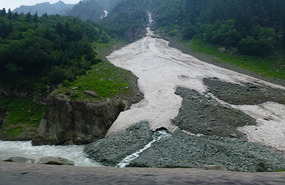
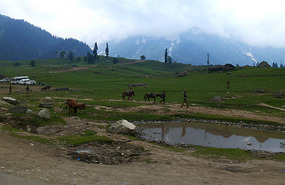
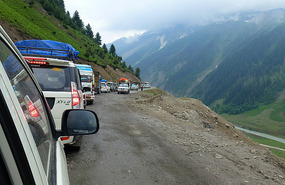
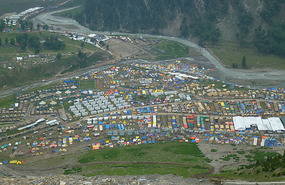
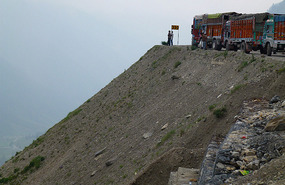
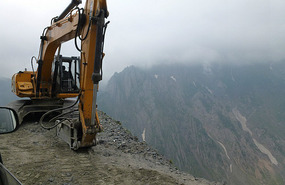
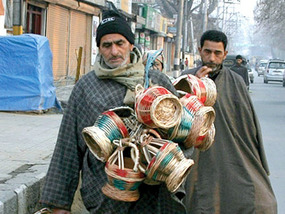
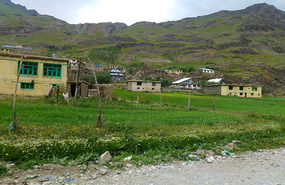
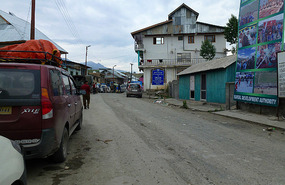
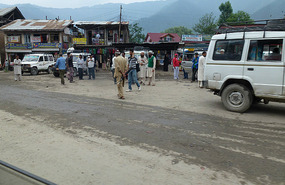
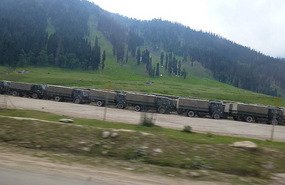
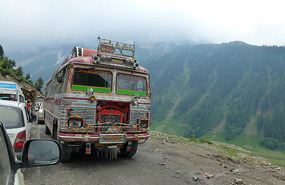
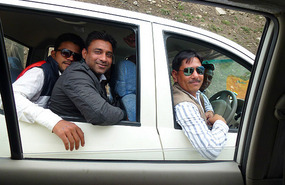
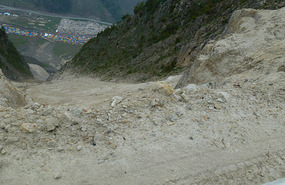
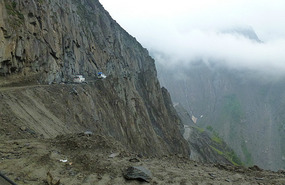
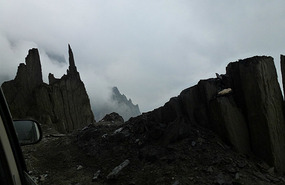

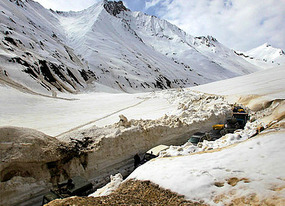
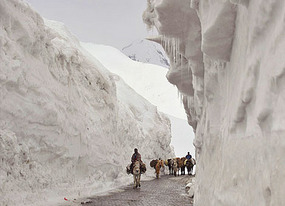
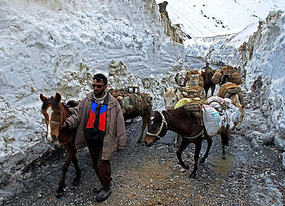
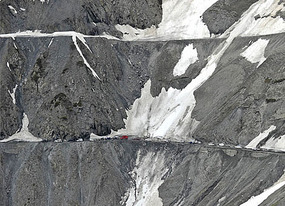
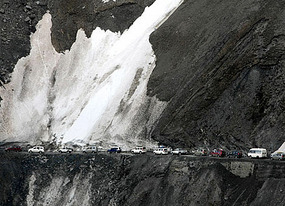




2025-05-22